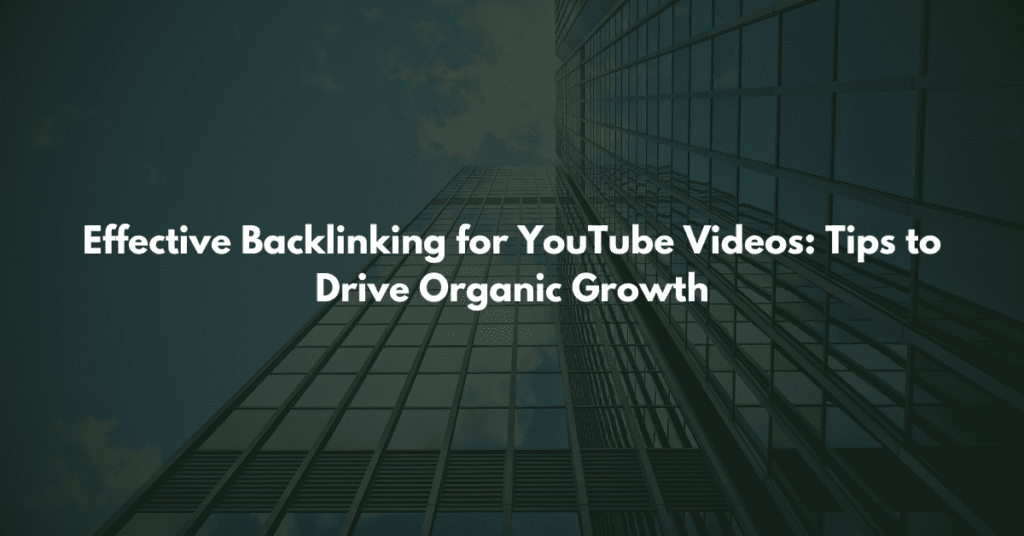YouTube Analytics is an essential tool for anyone serious about growing their channel and optimizing videos for better search rankings. By understanding the metrics that matter, creators can fine-tune their strategies, improve video visibility, and build lasting engagement. This guide dives into the key metrics to track, how to implement A/B testing effectively, and how these insights can be transformed into actionable strategies for SEO success. Whether you’re new to YouTube or looking to optimize an existing channel, these proven techniques can help boost your rankings.
Understanding the Role of YouTube Analytics in SEO
YouTube’s algorithm prioritizes videos that engage viewers, and analytics provide a window into how your content performs. By monitoring viewer behavior, such as watch time, engagement, and traffic sources, creators can align their content with what audiences want, ultimately boosting rankings.
YouTube Analytics isn’t just about numbers; it’s a roadmap to creating content that resonates. For instance, identifying underperforming videos can guide adjustments in titles or thumbnails, while top-performing videos reveal what’s working. Leveraging this data ensures your content remains discoverable and relevant in a competitive space.
Key Metrics to Track for Performance Insights
Watch Time and Average View Duration
Watch time is a core ranking factor for YouTube’s algorithm. The more time users spend watching your videos, the more likely YouTube is to promote your content. Average view duration complements this by indicating how well your videos retain viewers.
How to Optimize:
- Create engaging introductions to hook viewers.
- Use storytelling techniques to maintain interest.
- Break long videos into clear sections to keep content digestible.
Audience Retention
Audience retention shows the percentage of your video that viewers watch. High retention rates signal to YouTube that your content is valuable. You can identify points where viewers drop off and address them in future videos.
Example: If viewers often leave after your intro, consider shortening it or making it more dynamic.
Click-Through Rate (CTR)
CTR measures how often viewers click on your video after seeing it. It’s influenced by your title, thumbnail, and video topic. A high CTR indicates that your content aligns with viewer interest.
Strategies for Boosting CTR:
- Use clear, compelling titles with keywords.
- Design eye-catching thumbnails that match the content.
Engagement Metrics (Likes, Comments, Shares)
Engagement shows how your audience interacts with your videos. Videos with more likes, comments, and shares are prioritized by YouTube’s algorithm.
Tips to Boost Engagement:
- Ask questions in your videos to encourage comments.
- Use calls to action (CTAs) to prompt likes and shares.
Traffic Sources
Knowing where your viewers come from can shape your promotion strategy. For instance, a significant number of views from search traffic suggest strong keyword alignment.
Actionable Steps:
- Use keywords in your descriptions and tags to increase discoverability.
- Promote your videos on social platforms to diversify traffic sources.
Subscriber Growth and Viewer Demographics
Analytics show how your subscriber count grows over time and who your viewers are. Tailoring content to your audience’s demographics ensures relevance and retention.
How to Use A/B Testing with YouTube Content
What is A/B Testing on YouTube?
A/B testing involves experimenting with two versions of a video element (e.g., thumbnails, titles) to see which performs better. It’s a powerful way to refine your content and boost SEO.
Conducting A/B Tests with YouTube Tools
- Select a Variable to Test: Choose a specific element like the thumbnail.
- Create Two Versions: Design two variations to compare.
- Measure Performance: Use metrics like CTR and watch time to evaluate which performs better.
Best Practices for A/B Testing on YouTube
- Test one variable at a time to isolate results.
- Allow enough time to collect meaningful data, usually 7–14 days.
- Use consistent testing conditions, such as the same video and upload timing.
Turning Insights into Actionable SEO Strategies
Analytics are only useful if you act on them. Here’s how to transform your data into results:
- Optimize Titles and Thumbnails: Use CTR data to refine these elements.
- Enhance Video Structure: Address drop-off points to improve retention.
- Schedule Content Strategically: Use viewer activity metrics to publish when your audience is most active.
By consistently iterating based on analytics, you can build a channel that performs better in search rankings and keeps viewers engaged.
Common Mistakes to Avoid When Using YouTube Analytics
- Ignoring Retention Data: Overlooking drop-off points can harm your SEO efforts.
- Focusing on Vanity Metrics: Metrics like views are important, but they don’t provide the full picture.
- Not Testing Regularly: Without A/B testing, you miss opportunities for improvement.
Conclusion
Using YouTube Analytics for SEO is a game-changer for growing your channel. By tracking key metrics such as watch time, CTR, and audience retention, and implementing A/B testing, you can refine your content strategy to rank higher and attract more viewers. Consistent analysis and action ensure that your channel stays competitive and continues to thrive.
FAQs
1. Why is audience retention important for SEO on YouTube?
Audience retention signals the value of your content to YouTube’s algorithm, helping improve its visibility.
2. How often should I check YouTube Analytics?
Checking weekly ensures you stay on top of performance trends and can adjust strategies promptly.
3. What are the best tools for A/B testing YouTube content?
Tools like TubeBuddy and vidIQ offer features for A/B testing titles and thumbnails.
4. Can YouTube Analytics help me find my target audience?
Yes, metrics like demographics and traffic sources help identify and tailor content to your viewers.
5. What’s the ideal CTR for YouTube videos?
While it varies by niche, a CTR of 4-10% is considered good for most channels.



